What is Cholesterol?
Cholesterol is a type of fat normally found in the bloodstream. It plays an important role in helping the body make cells, hormones, vitamins, and promote normal growth and development. However, when the level of bad cholesterol in the bloodstream gets too high, it can cause health problems by damaging the blood vessels and organs.
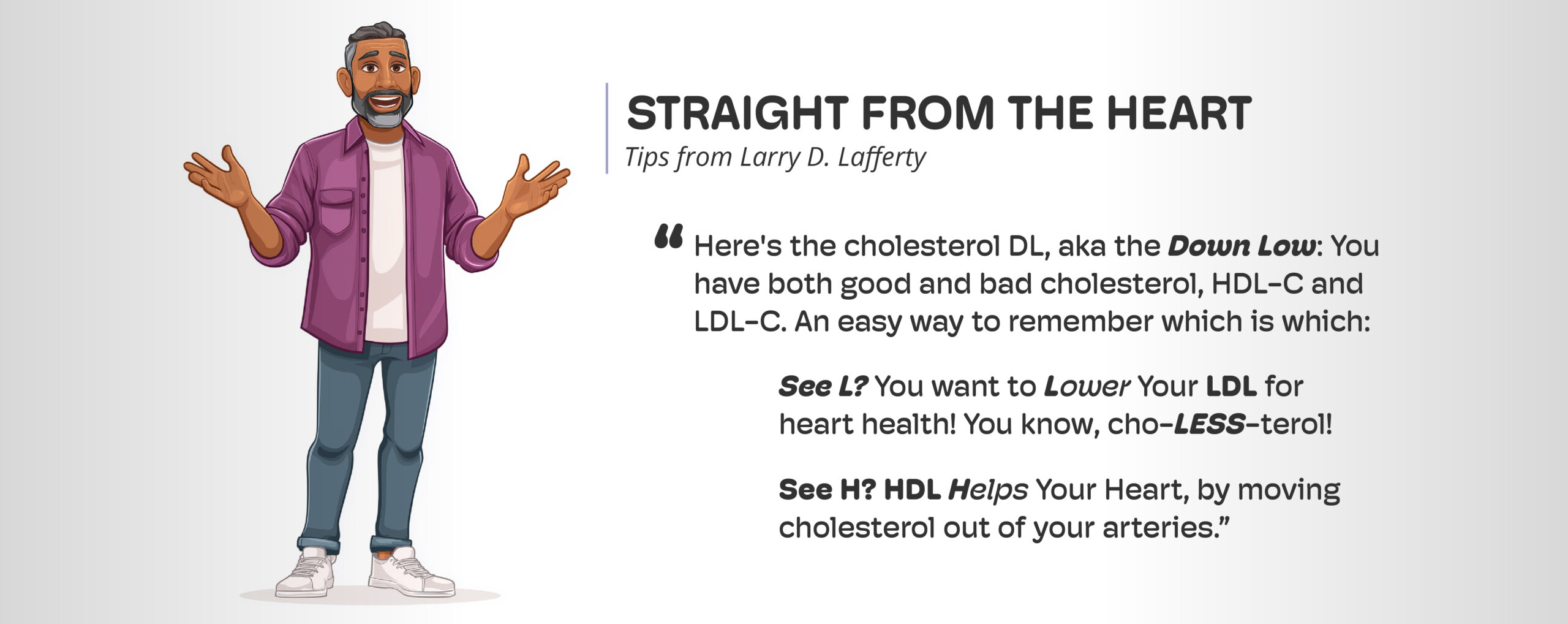
HDL-cholesterol (HDL-C): HDL-C helps remove excess cholesterol from the bloodstream, preventing it from building up in blood vessels.
Higher HDL-C levels are usually linked to a lower risk of heart disease.
Your HDL-C may be lower if you smoke, eat a very low-fat diet, or have high triglycerides.

Heart disease is the leading cause of death in the U.S., and stroke ranks fourth.
Step 1: Learn the risks of heart attack and stroke.
- Overweight
- Lack of exercise
- Diet high in saturated fats and added sugar
- Tobacco/ nicotine/ cigarette smoking
- High blood pressure
- Diabetes
- Family history of heart attack and stroke
Step 2: Talk to your healthcare team.
- Ask about your risk for heart disease and stroke.
- Know your cholesterol goal.
- Get your cholesterol checked:
National and international guidelines recommend that all adults have their cholesterol checked at least every 5 years. Kids should get tested once between ages 9–11 and again between 17–21 to help catch any problems early.
- If your lipid panel results are high, a “risk calculator” can help you become aware of your risk level.
- The American Heart Association PREVENT TM Online Calculator
- Learn more about lipid panels here.
Step 3: Once you know your goal, take action!
- Follow the diet you and your healthcare team agreed to.
- Keep a daily journal of what you eat and how many minutes you exercise.
- If you are on medicine, take it.
Step 4: Follow up with your healthcare team to see if you’re meeting your goals.
- Get your cholesterol checked again.
- Make adjustments to your diet, exercise, and medication level as needed.
Diet: What You Eat Can Lower Your LDL-C

Choose lean protein foods in place of fatty meats
- Fish like salmon, tuna, trout
- Chicken or turkey with no skin
- Lean red meat like “round” and “loin” cuts
- Plant protein foods like soy (tofu) and dried beans and lentils
Choose foods healthy fats in place of saturated fat
- Olive, avocado, soybean, corn, and canola oils
- Avocados, unsalted nuts, and seeds


Choose foods high in soluble fiber
- Black beans, kidney beans, split peas, and lentils
- Barley, oats, oat bran, and ground flax seeds
- Broccoli, brussel sprouts, sweet potatoes
- Apples, avocados, oranges, pears
Avoid saturated fat:
- Butter, coconut oil, palm kernel oil, ghee, or beef tallow
- Fatty cuts of meat, ground beef, sausage, bacon, hot dogs
- Full-fat dairy products (whole milk, ice cream)
Avoid foods with partially hydrogenated oils
- Trans fats have mostly been removed from foods
- May be found in store-bought baked goods, canned frosting, or some fast foods
Avoid food and drinks with sugar
- Soda, sweet tea, fruit drinks, and sport drinks
- Cakes, cookies, donuts, pies, pastries, candy
Avoid foods high in cholesterol
- Limit egg yolks to 2-3 per week (one at a time) if you have high LDL-C, diabetes, or heart failure
- Organ meats like liver and gizzards
Current research suggests no. In fact, people born with very low LDL-C live normal, healthy lives — and studies show the lower your LDL-C, the lower your risk for heart disease. For most, low LDL-C is safe and a good thing for heart health.
Evidence supports an LDL-C target of <100 mg/dL for healthy adults in the general population.
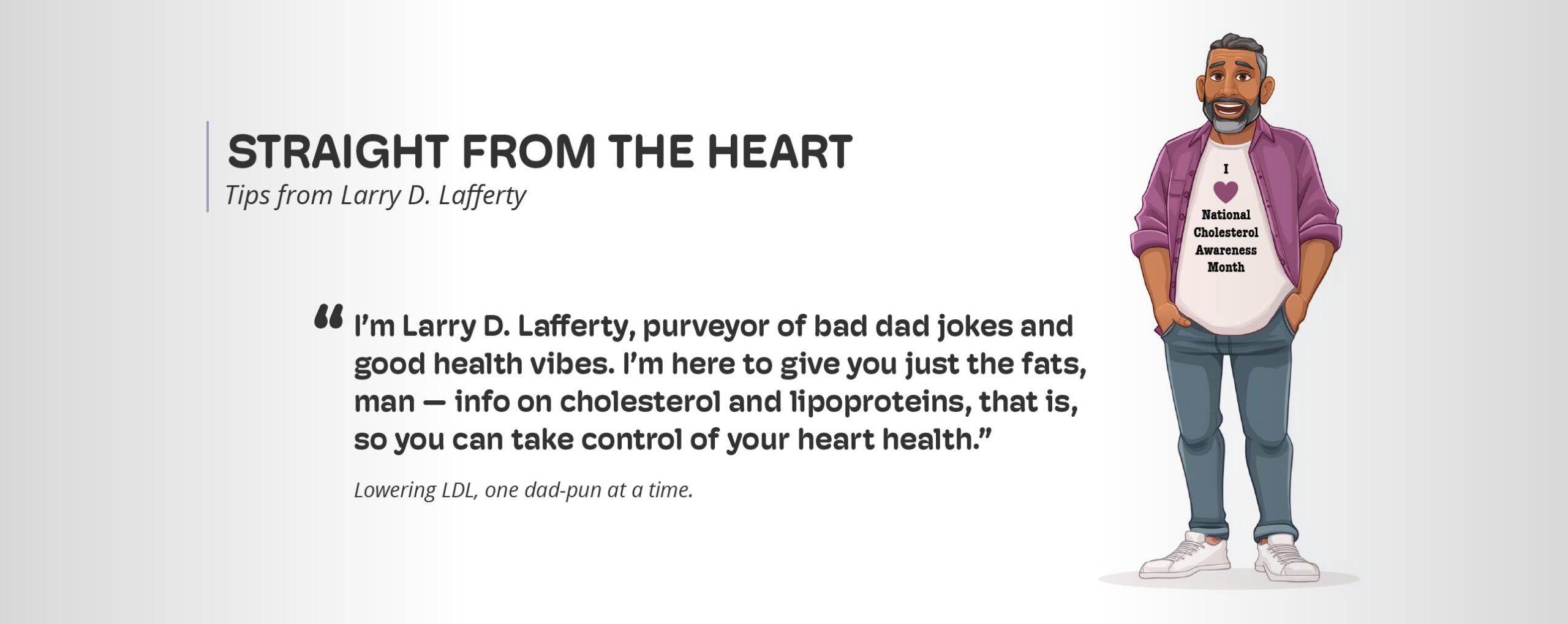
National Cholesterol Education Month, observed every September, is a time to raise awareness about the importance of managing cholesterol for better heart health. The Foundation of the NLA supports this mission by sharing resources, tips, and tools to help individuals understand their cholesterol levels, reduce cardiovascular risk, and take proactive steps toward lifelong wellness.



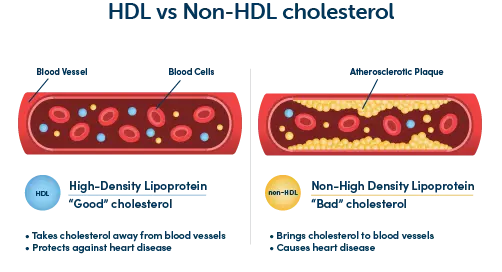




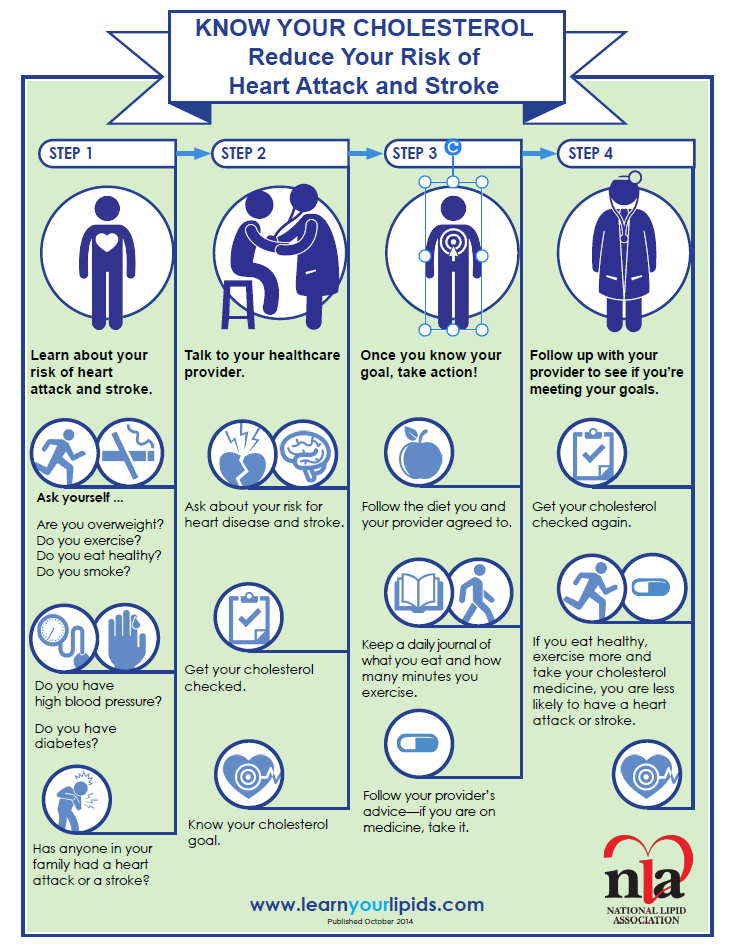
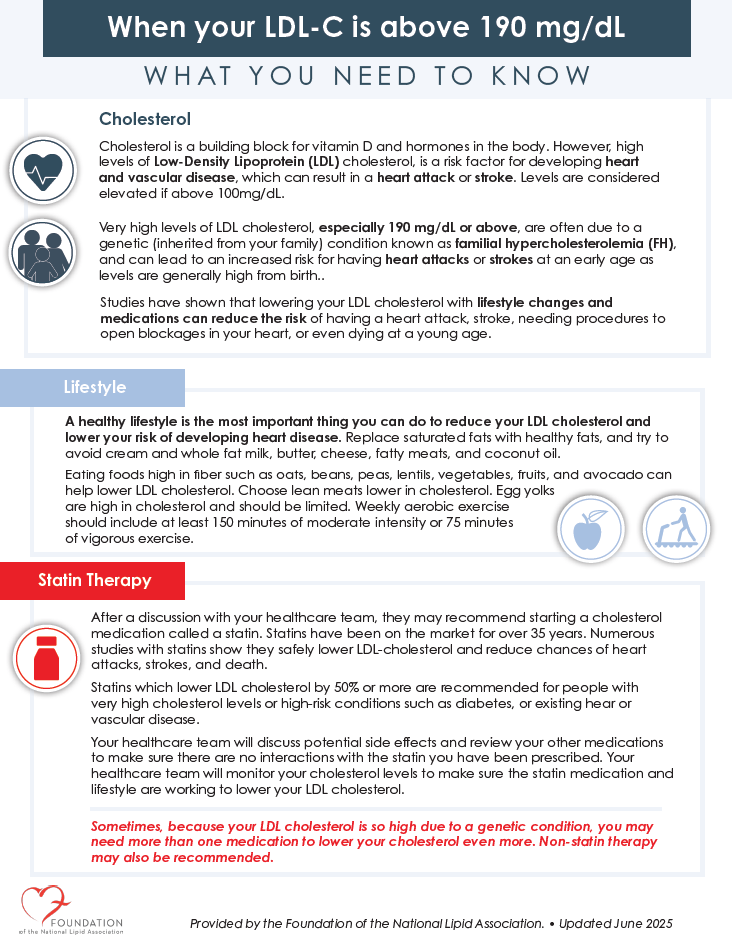
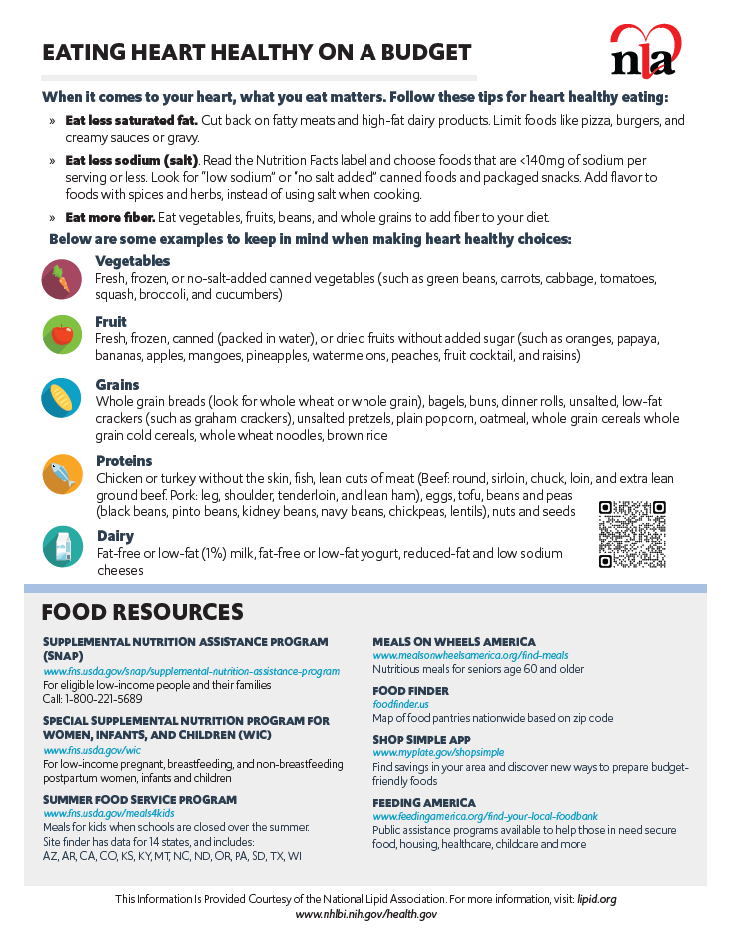
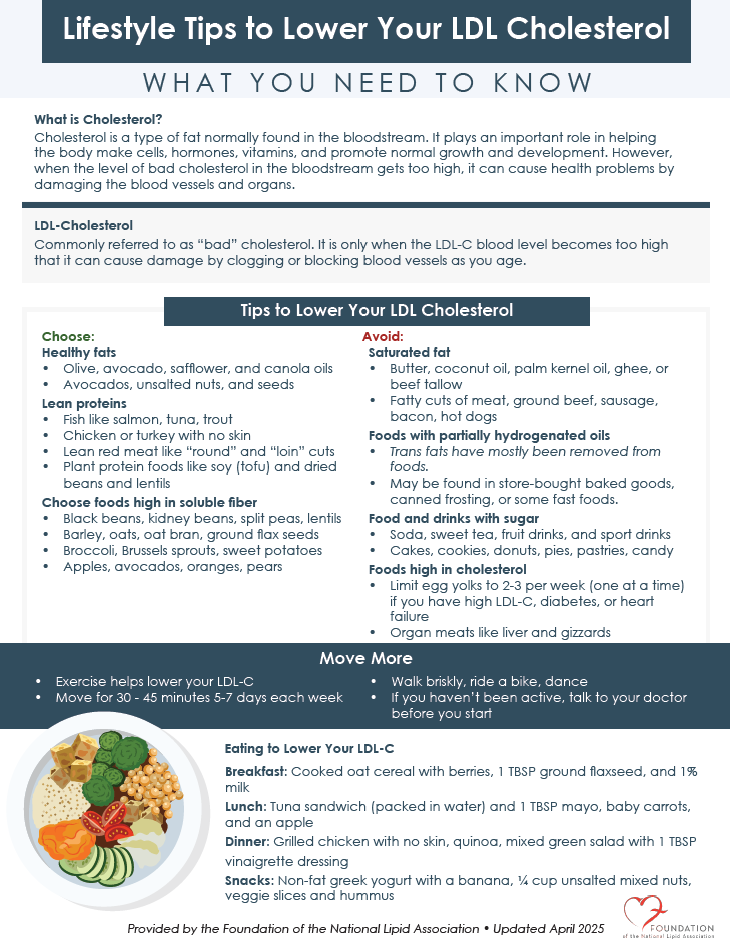
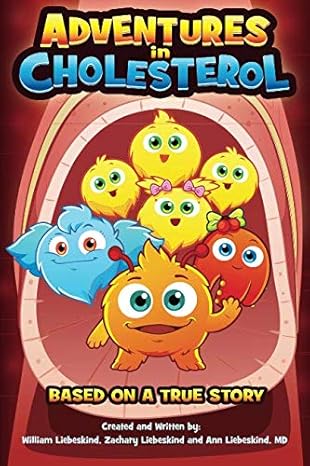
Be sure to follow our socials for more cholesterol tips (and plenty of dad jokes) from Larry, who’s on a mission to make lipids unforgettable.